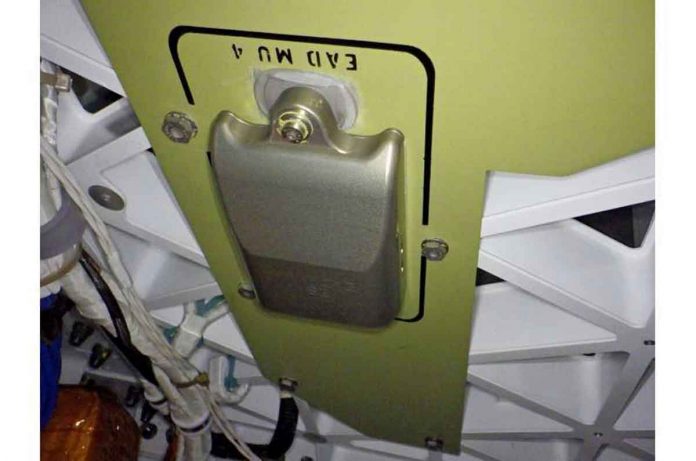The Artemis launch on Monday will be an unmanned first flight into orbit around the moon. However, technology worn by ESA astronauts on the International Space Station has been hard-mounted aboard the NASA-ESA Orion module.
Five ESA Active Dosimeter—Mobile Units (EAD-MUs) will map the deep space and lunar radiation environments as thoroughly as possible, allowing comparisons with ISS measurements and aiding in the assessment of the safety of future crewed Artemis missions.
These EAD-MUs, each about the size of a deck of cards, have been mounted on panels dotted around the capsule in various locations. This advanced technology, tested on the International Space Station, along with a complementary suite of NASA detectors and instrumented mannequins from the German Aerospace Center, DLR, will allow scientists to see how the radiation fluctuates during the mission, as well as total levels of ionising energies the spacecraft will travel through, from as far as nearly half a million kilometres from our planet.
“These EAD-MUs—previously either worn by astronauts or used as area monitors for some 26 different regions of the ISS—are one element of a larger ESA-patented system, which includes a central device for EAD-MU charging and data transfer,” explains ESA physicist Matthias Dieckmann, who led EAD development.
“In 2015, ESA astronaut Andreas Mogensen piloted the EAD system for the first time. Its goal was to replace passive radiation dosimeters with a ‘post mortem’ function, limited detection responses, and no time-tagging, indicating only full-time integrated exposure. Instead, we developed gold-standard technology that can provide flight surgeons with a complete chronological dossier of a crewmember’s exposure history, compliant with first-rate medical support, and thus obtain a reliable understanding of the space radiation environment in which they live and work.”
Dr.Dieckmann adds that the EAD-MUs are distinguished by verified, well-calibrated detector responses: “This extends to some 14 orders of magnitude for neutrons, which is unmatched by any other wearable detector, plus sensitivity to electrons and the particle masses emitted by our Sun, from primary protons to ion nuclei.”
The versions aboard Orion are larger than the EAD-MUs flown on the ISS because they have an automated measurement start system—triggered by the acceleration of the 111-meter-tall SLS launcher as it leaves the ground—as well as a larger battery to keep the devices running for the Artemis mission’s approximately 40-day duration. Their data will be recovered following Orion’s splashdown.
The European Space Agency (ESA) has established a Radiation Research Road Map for the coming decade, which includes the deployment of an improved version of the EAD-MU system as part of the ESA Radiation Sensor Array, a planned space station in lunar orbit.
ESA’s General Support Technology Program, GSTP, which prepares promising technology for space and is led by Udo Becker, provided funding for EAD development. “This was the first time, thanks to Udo’s support, that such a complex development was made possible, with contributions from four Member States: Austria, Finland, Germany, and Ireland,” Dr.Dieckmann says.

